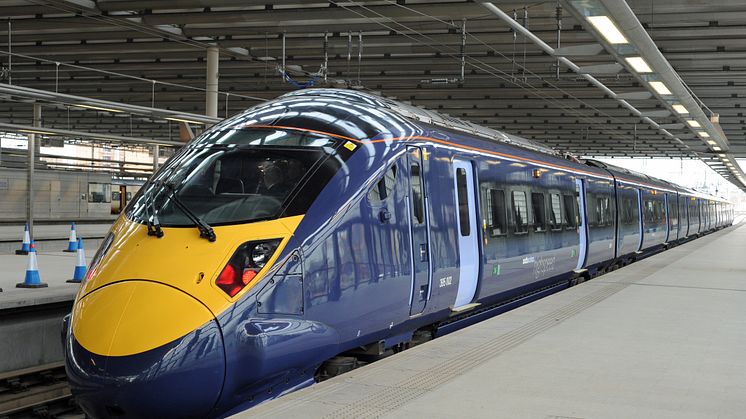
Blog post -
Koji Agatsuma: My favourite story to tell at Innotrans
Koji Agatsuma, Head of Engineering at Hitachi Rail Europe, writes from Innotrans 2016
For me, Innotrans is all about re-charging my batteries.
It may seem an odd statement, given most of us will leave Berlin at the end of the week exhausted and desperately in need of rest.
It’s important for me to view Innotrans and talk with people as a rare opportunity to put aside our daily tasks and reflect on new ideas which can make a big difference. Every time I come to Innotrans I relish the opportunity to visit stands and seek out new innovations in engineering. In my role as Head of Engineering, innovation is always on my mind.
At Innotrans I try to visit as many stands as possible and discuss new technology and ideas which I can bring back to my own projects. I always leave these conversations judging the idea on one simple criteria: “will it make a positive difference for people?”
Engineers solve problems that passengers face. When our desks are buried in formulas and technical documents it can sometimes seem a different world to the one a passenger will experience when the train is delivered.
From my time at Hitachi, both in Japan and Europe, there’s always been a strong sense in the company that we should always reflect on how it will improve an individual’s train journey.
I’ve been lucky to work on the Hitachi stand at Innotrans before, and every time I arrive full of pride in how we are transforming passenger experiences. After developing new projects in recent years, including our major Intercity Express Programme, it’s my first Hitachi Rail Europe project which always stands out.
After discussing it with a visitor on our stand earlier this week I realised it was worth sharing widely.
Back in 2007, I first moved to London to work on the Javelin Class 395 trains Hitachi was building for High Speed 1. These were the first ever high speed trains in the UK. They also had the added complication of needing to run on both new and existing infrastructure. At the time I described the dilemma as finding a compromise between the suspension needs of a Formula One racing car and an off-road four-wheel drive. Hitachi’s high speed bullet trains in Japan are known worldwide. However, bringing this to the UK was an enormous challenge. We had to constantly think of new ways to allow our Japanese engineering models to operate on UK infrastructure, which had more in common with the Victorian era than 21st century high speed rail.
I’ll never forget the severe winter of 2010, when trains across the UK ground to a halt under adverse weather conditions. On the other hand, our Class 395s ran without any major problem. It was proof that our global expertise, coupled with innovative thinking, could work across any network.
I love telling this story at Innotrans because it always makes me think just how much impact engineering can have.
For many attending the 2012 London Games, the Class 395 from Ashford to London was the first UK train journey they undertook. The train has cut journey times in half and opened up new commuter hotspots for the capital.
An engineering innovation which has made a difference to people’s lives. A story I’ll be telling at Innotrans for years to come.
*You can find out more about Hitachi Rail Europe at Innotrans 2016 here